Considering the process of evolving from 'service' to 'platform' from a thorough analysis of the design tool 'Figma'

Whether the released service will succeed is the most important business concern.
Why Figma Wins-kwokchain
https://kwokchain.com/2020/06/19/why-figma-wins/
table of contents
◆ First Stage Growth Factors: Cloud and Technology
◆Growth factor of the second stage: spread of services and sales methods that go beyond job types
◆Third Stage Growth Needs: Communities and Plugins
◆Role of platform
According to Kwok, companies are companies that circulate their own businesses, and they need to find the 'next cycle' to succeed. Kwok says the design tool 'Figma', which works on the web and allows multiple people to chat and create designs, is a major example of succeeding in finding the 'next cycle'.
Internet service ``Figma'' that allows you to share & edit real-time UI design with multiple people-GIGAZINE

In order to understand Figma's success, it is necessary to understand not only technology, market insight, business structure, but also resource allocation to core business and business that can be expected in the future, to platform construction to generate synergistic effects of growth Kwok points out.
◆ First Stage Growth Factors: Cloud and Technology
Kwok analyzes that the first stage of Figma's growth was in “cloud” and “technology”.

Kwok said that the value that early Figma brought was 'to collaborate on design'. Before Figma appeared, files created by each designer were shared on the cloud, whereas Figma can now directly edit files on the cloud. Furthermore, by building the work environment on the Web instead of a desktop application and completing it all on the Internet, the user can now be unaware of synchronization. Kwok gives a similar example of the difference between 'sharing Word files on Dropbox and editing at the same time with Google Docs.'
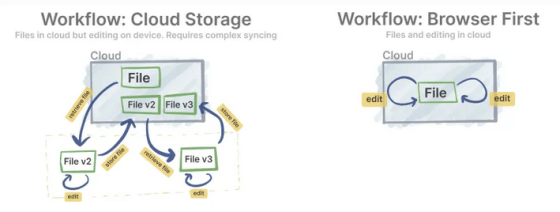
There are other benefits to having a browser-based work environment. In the past, when the designer and the project manager shared the progress of work, it was necessary to send and download the file at the present time, re-send the file pointing out the corrections, but with Figma you can share the latest You can share and modify your designs.
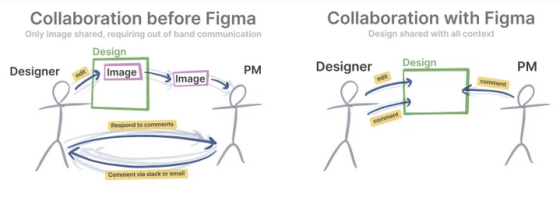
It can not be overlooked that the elements that make up the design such as images and prototypes, which were previously shared on different platforms, can now be shared on the same platform by Figma.

◆Growth factor of the second stage: spread of services and sales methods that go beyond job types
The second stage of Figma's growth is the 'cross-side network effect' and 'enterprise sales.'
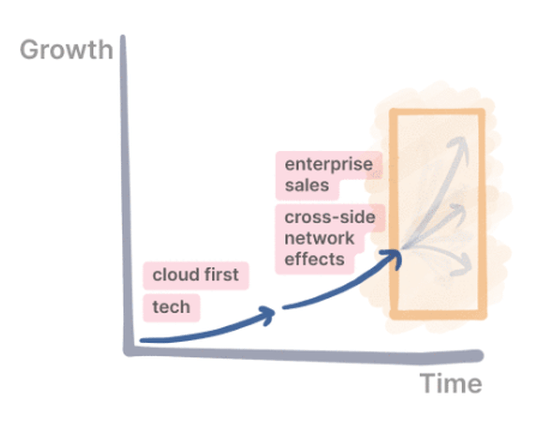
The features of Figma, which supported the growth of the first stage, spread the need for non-designers to engage with companies in the process of creating designs, while at the same time providing designers with the opportunity to participate in product and business decisions. Kwok pointed out. The design, which used to be opaque in the past, has been made transparent, and it is now recognized as having something to do with products, engineering, and business. Figma is not a tool for designers, but a tool for teams involved in design.

Kwok analyzes Figma, which targets different job types, as being advantageous in terms of business scale. In the early stages of Figma's growth, the growth engine was the 'direct network effect,' which is a virtuous cycle in a single job, but there is a limit to growth with the direct network effect alone. Figma said that he was able to achieve further growth by involving the occupations other than designers such as engineers and project managers and creating the 'cross-side network effect'. If a designer was using Figma, the engineer of his colleague would also start using Figma, and that engineer would recommend Figma to another designer.
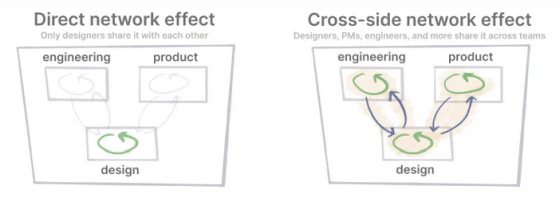
Focusing on Figma's sales method, the stage can be divided into two stages. First of all, Kwok points out that based on the service itself, we aim to establish and expand the service to individuals, and when the service begins to take root, we will sell to the company itself. However, the sales model to shift from such a “product-driven consumer sales model” to a “sales-driven enterprise sales model” has not been fully established, and Figma still has issues to be addressed. That.

◆Third Stage Growth Needs: Communities and Plugins
In the second stage, while growing due to the cross-side network effect and new sales model and competing services such as

In the next growth stage of Figma, it is necessary to create not only the 'local network effect' limited to the spread within the company but also the 'global network effect' that transcends the company. Kwok says Figma is already preparing to build an ecosystem beyond the enterprise by providing 'plugins' and 'communities.'
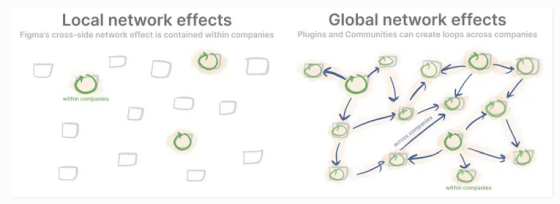
At the time of article creation, the
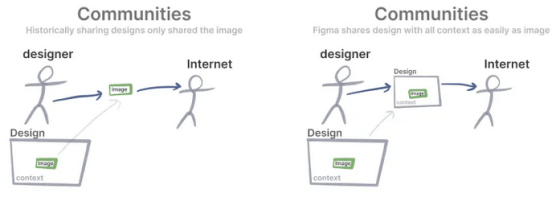
Following the community, plugins help Figma grow. The plugin is available to anyone within the Figma community, and you can also
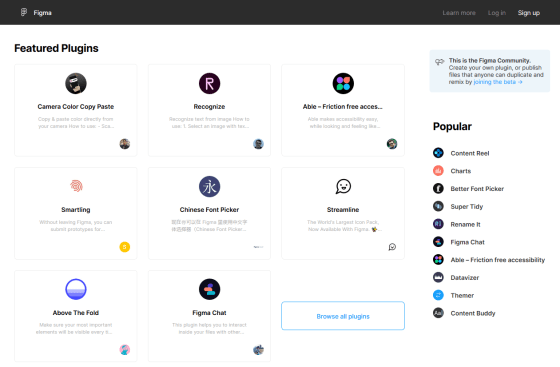
With the advent of plugins, not only will Figma be more extensible, but anyone will be able to take advantage of additional features exposed on the Internet. Kwok points out that this can overcome the barrier that 'the increasing number of users makes it difficult to meet the needs of all users'. It is explained that plug-ins fill the gap between 'customer needs' and 'corporate development capability'.
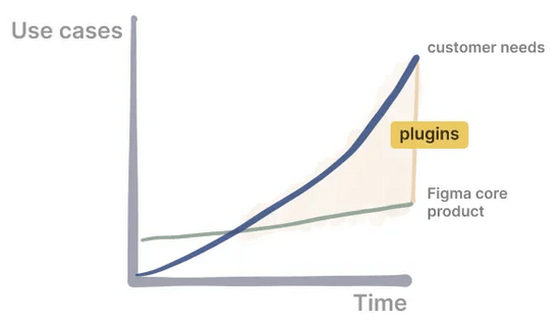
According to Kwok, the method of building sales and SaaS for enterprises is relatively mature, but the method of building a platform is not yet mature. “We don't have a common vocabulary to describe platform building,” Kwok says, but due to the differences in the plugin systems of Figma and Sketch, we are trying to explain the elements necessary for platform building.
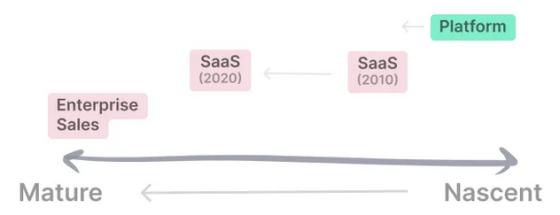
Although the Sketch plugin has well-documented and wide coverage, the user needs to download and install the plugin from the cloud. Also, the management of plugins is decentralized, and many plugins are uploaded to GitHub. There is no rating system or approval process for plugins. In contrast to the Sketch plugin system, Figma's plugin system is managed by Figma's cloud, and everything from search to installation is completed on the cloud.
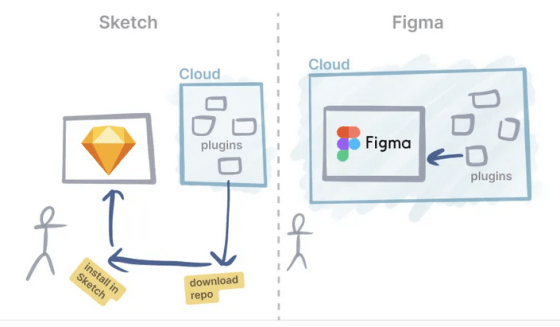
However, in order to complete the management of the plug-in on the browser like Figma, it is said that safety, performance, and stability must be ensured. Kwok points out that this trust and stability is the foundation of a strong ecosystem, and Figma's blog also talks
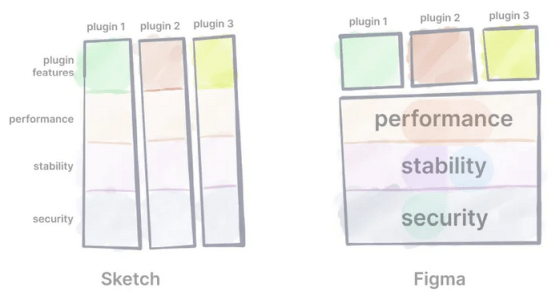
Kwok commented that 'Sketch has no fault' when comparing Sketch and Figma's plug-in system. It's unclear how ambitious the plugin will be today, Kwok said. In addition, Kwok acknowledges that Sketch's laissez-faire attitude towards plugins has helped the community flourish, and that other companies like Figma have become aware of the importance and potential of plugins. I am. However, Kwok says that Sketch's attitude toward plug-ins hampers the possibilities of Sketch itself, and that Sketch's complete cloudization of plug-ins is the 'right way'.
◆Role of platform
Management policy is also important for the platform to grow, Kwok said. Although Figma allows monetization in its plugin system, the plugin wants to make it accessible to all users. The balance between the business and the open source community is important, and there is no right answer.
Kwok points out that although engineering progress such as software development is remarkable, design is also heading in the same direction as engineering, and Figma is at the center of it. Figma is speeding up the progress of design.
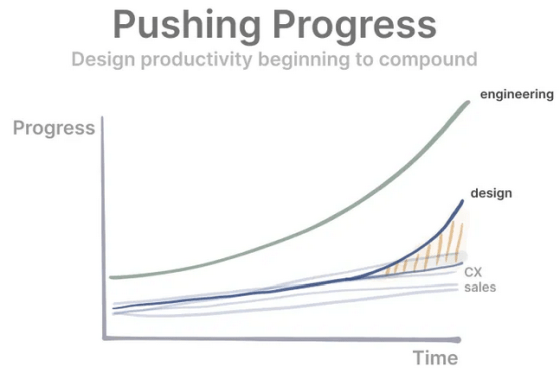
However, the real possibility of Figma lies in whether it can realize the transition to the platform. “There are many factors that determine which companies will succeed in a particular area. But the impact of successful companies will be enormous. Successful companies, such as the wet clay that supports the natural ecosystem, will grow. Is the basis for defining how the sector as a whole will grow, which is a huge opportunity and responsibility for companies that could potentially act as platformers, such as Figma,' Kwok said. I'm talking.

Related Posts:
in Web Service, Posted by darkhorse_log






